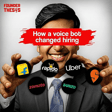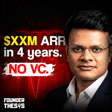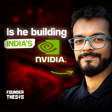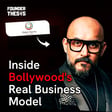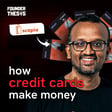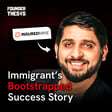
Clinics, Not Apps: Dr. Pankaj Jethwani’s Contrarian Take on Healthtech
How is Dr. Pankaj Jethwani building 2070 Health into India’s first healthcare venture studio—while using AI to collapse care costs in obesity and oncology? This Founder Thesis deep-dive blends startup playbooks with digital health, funding winter realities, and India’s policy rails (ABDM, DPDP) to decode what it really takes to scale healthtech.
Dr. Pankaj Jethwani (Managing Partner, W Health Ventures; CEO, 2070 Health) breaks down how a venture studio model can systematically create patient-centric companies in India’s digital health ecosystem. We unpack the rigorous PMF gates, high-margin care models, and the “AI as margin engine” thesis across obesity programs and oncology (including the Everhope Oncology partnership with Narayana Health). Expect a founder-first masterclass on distribution, clinician workflows, and SaMD validation—plus contrarian takes like “clinics, not just apps,” and “studio > fund” for ops-heavy care delivery. Timely and relevant for 2025: GLP-1 adoption in India, data protection and consent design under DPDP, and building on ABDM/UHI. If you’re building or backing healthtech in India (or exporting to the US), this is your blueprint for execution in a funding-constrained market.
• How Dr. Pankaj Jethwani built 2070 Health’s venture studio to launch scalable clinics & platforms
• Lessons from scaling during India’s funding winter: PMF gates, unit economics, and trust windows
• AI as margin engine: shifting coaching and care navigation from people to validated AI
• GLP-1 obesity care and oncology at scale: Everhope Oncology x Narayana Health
• Building on India’s policy rails: ABDM/UHI integration, DPDP consent flows, SaMD compliance
• Distribution playbooks: 6–12 month trust building, clinician design, and partnerships
Subscribe to the Founder Thesis Podcast
Follow Akshay Datt on LinkedIn for exclusive content
Visit founderthesis.com for more founder stories
00:00 - Pankaj Jethwani’s Founder Story
03:15 - Why 2070 Health Venture Studio
09:40 - W Health Ventures Investment Lens
16:05 - AI in Healthcare Cost Curves
23:20 - GLP-1 India & Obesity Care
31:45 - Everhope Oncology with Narayana Health
42:10 - Policy: ABDM, DPDP, SaMD
54:20 - PMF, Margins, Moats Playbook
#PankajJethwani #2070Health #WHealthVentures #DigitalHealth #HealthtechIndia #VentureStudio #AIinHealthcare #GLP1 #ObesityCare #Oncology #EverhopeOncology #NarayanaHealth #ABDM #DPDP #SaMD #TelemedicineIndia #FundingWinter #IndiaStartups #HealthcareStartups #FounderThesis
